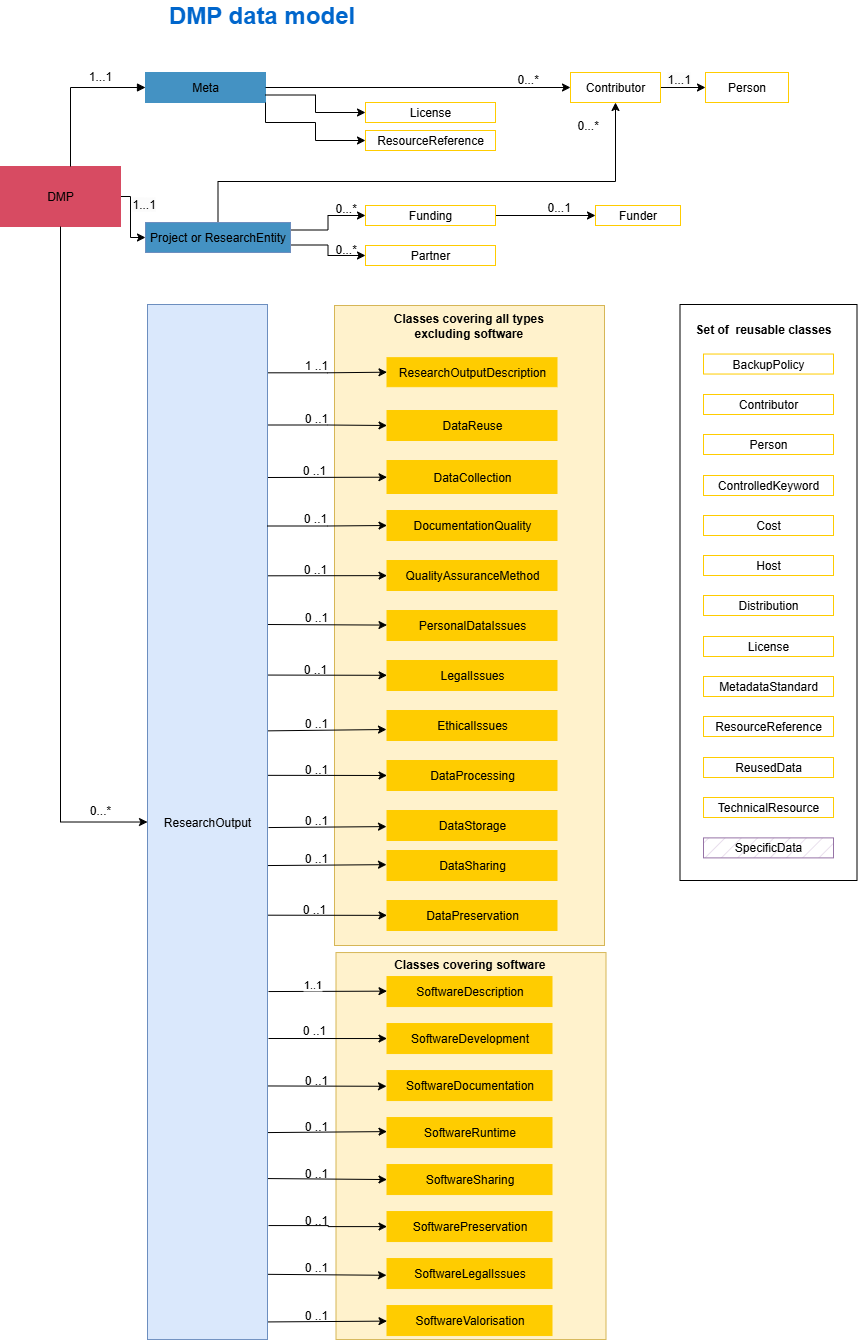# DMP OPIDoR data model for machine actionable DMPs
The following is a description of the common data model currently in use to structure the content of DMPs that are produced either in the context of a scientific project or a research entity (research unit, platform, data infrastructure, observatory... )
The diagrams below illustrates how the content of a DMP is structured.
The structure is composed of first-level classes (blue boxes) that define core entities : metadata about the plan (Meta), information about the project (Project) or the entity (ResearchEntity) and one or more research outputs. Research outputs according to their type, software or other, are respectively described by a set of classes. These classes are themselves composed of a set of sub-classes (yellow-bordered boxes ) that represent the attributes and components to address type-specific management issues.
The yellow-bordered boxes represent the existing sub-classes. They may be extended and/or combined in a modular way to build the main classes.
The class-derived display forms (called Templates Json) can be customized to provide the relevant information (labels, examples, default or constant values, tooltips, registries, external resources, ..).
The SpecificData class (hatched box) enables the creation of specific forms built on classes that are not part of the common model. For example, this class is used for the MesoatLRServiceRequest template.
To begin navigating through the different classes and enums (registries), we recommend starting at the highest level : DMP. For each class, a data dictionary and a Json schema are provided, as well as the templates (standard or customized) for the implemented classes.
For example for DataStorage, DataStorage corresponds to the parent class that is implemented in DMP OPIDoR as DataStorageStandard. This schema has been extended and customized to meet the needs of certain data centers or other entities, such as MesoatLR data center or MesoUCA In the latter cases, customized lists of service types have also been created.
